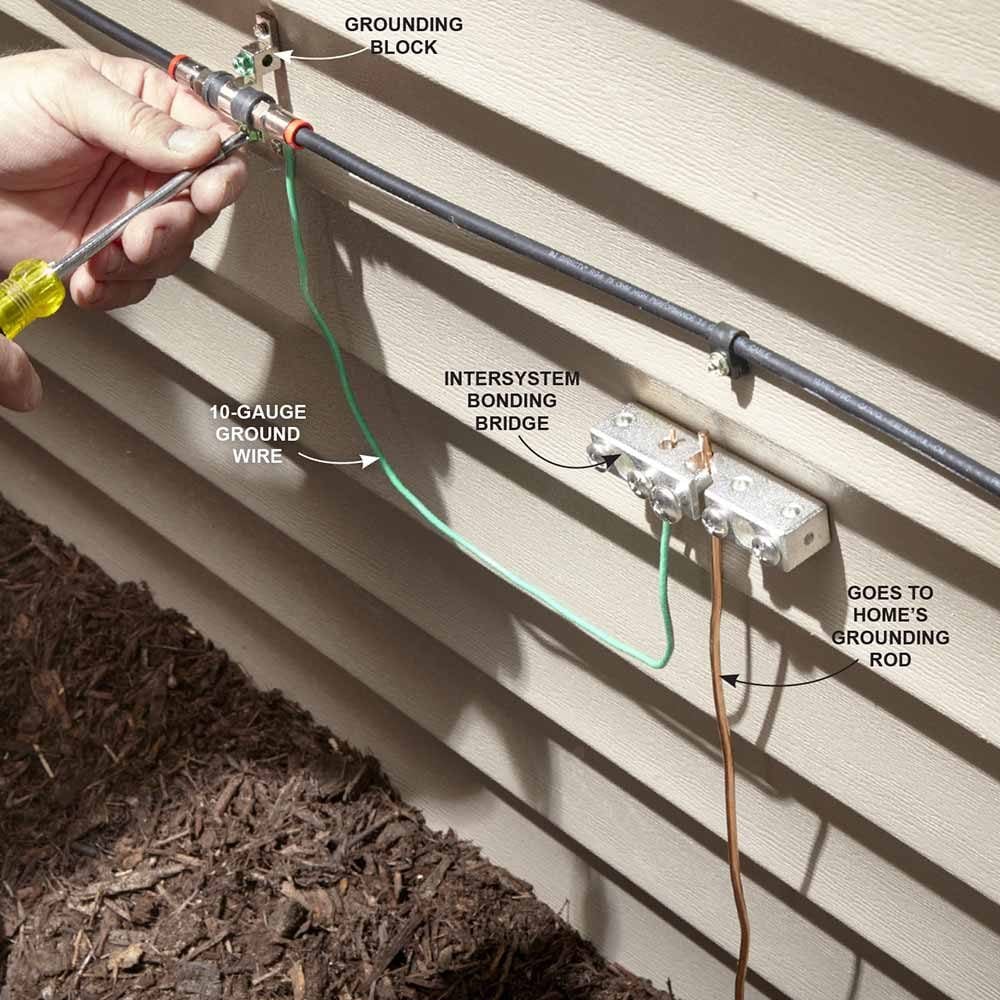So I've started to build up a pretty nice server setup and I've got everything protected on the power outlet side through my UPS but I'm concerned about getting hit by a lightning strike through the cable modem eg, Coax outside->Modem->Firewall(pfsense on server)->Switch->Everything on network.
I'm looking at a few options and figured I'd get some opinions and would like to know how others have thier networks setup for lightning protection. My setup right now is the cable coming right to my motorola sb6141 no splitter, then Cat5 to a port on one of my servers running pfsense then out of a different port to my main switch. All of my equipment including the modem is right now in the same rack in the basement about 6' from where the cable comes in.
Options
1: Grounding the coax with a TII 212 Link which if I understand correctly I shouldn't install inside but outside.
2: Running the coax through a surge protector. I'm not sure of the quality of some of the coax surge protectors built into power strips or UPS's so I'd be looking at something trustworthy that just does the one job.
3: Running the cat5 between the modem and the firewall through a surge protector. Just like the coax surge protector I don't trust the power strip ones. If I go this route or #4 I'd still look at #1 or #2 to protect the modem as well
4: (What I'm currently leaning towards)Two media converters to run fiber beween the modem and the firewall. If I go this route the path is completely cut off for a strike to come in through the network but I am concerned about it hitting the modem and then through the modems power cord->PDU->a server. So I'm thinking if I go this route I would want to take the modem out of the rack and make a shelf for it and one of the media converters right where the cable come in. The downside to not having the modem powered from the pdu's in the rack is that if the power goes out everything in the rack will be on a UPS but I wont have internet access, not that I'd be doing a lot with it but it would be nice to not have the internet cut out if the power is only out for like five to ten minutes and I would like to set up the UPS software to email me.
I'm looking at a few options and figured I'd get some opinions and would like to know how others have thier networks setup for lightning protection. My setup right now is the cable coming right to my motorola sb6141 no splitter, then Cat5 to a port on one of my servers running pfsense then out of a different port to my main switch. All of my equipment including the modem is right now in the same rack in the basement about 6' from where the cable comes in.
Options
1: Grounding the coax with a TII 212 Link which if I understand correctly I shouldn't install inside but outside.
2: Running the coax through a surge protector. I'm not sure of the quality of some of the coax surge protectors built into power strips or UPS's so I'd be looking at something trustworthy that just does the one job.
3: Running the cat5 between the modem and the firewall through a surge protector. Just like the coax surge protector I don't trust the power strip ones. If I go this route or #4 I'd still look at #1 or #2 to protect the modem as well
4: (What I'm currently leaning towards)Two media converters to run fiber beween the modem and the firewall. If I go this route the path is completely cut off for a strike to come in through the network but I am concerned about it hitting the modem and then through the modems power cord->PDU->a server. So I'm thinking if I go this route I would want to take the modem out of the rack and make a shelf for it and one of the media converters right where the cable come in. The downside to not having the modem powered from the pdu's in the rack is that if the power goes out everything in the rack will be on a UPS but I wont have internet access, not that I'd be doing a lot with it but it would be nice to not have the internet cut out if the power is only out for like five to ten minutes and I would like to set up the UPS software to email me.
As an Amazon Associate, HardForum may earn from qualifying purchases.
![[H]ard|Forum](/styles/hardforum/xenforo/logo_dark.png)
